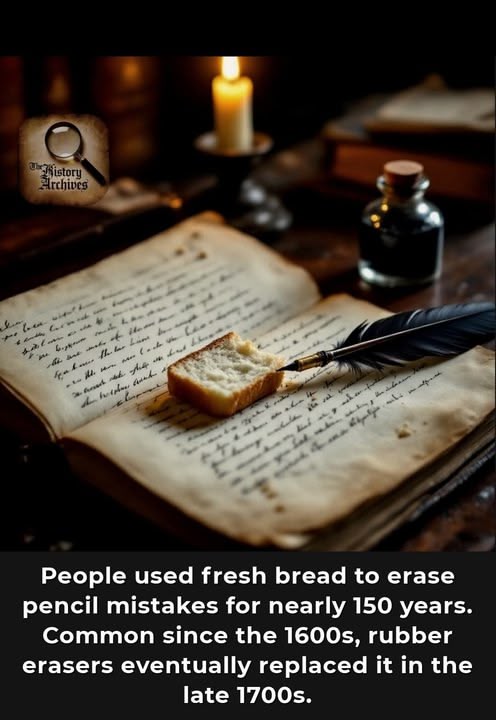The bread eraser
Before rubber erasers were common, a simple piece of bread was the go-to tool for fixing pencil mistakes. 🍞
From the early 17th century until the late 18th century, people regularly used bread to rub out graphite marks from paper.
Fresh bread was preferred for this task, as its soft and absorbent nature made it more effective at lifting pencil lead compared to stale bread.
This practice was widespread, especially in Europe where bread was a common household item and readily available for such uses.
Then, around 1752, the French Academy of Sciences began documenting the use of caoutchouc, or natural rubber, for erasing pencil marks.
In 1770, English chemist Joseph Priestley also noted the surprising effectiveness of rubber for this purpose, even coining the term "rubber" because of its rubbing action.
This discovery paved the way for a significant shift. Soon after, another Englishman, Edward Nairne, is credited with developing and marketing the first rubber erasers, leading to the decline of bread as an erasing tool.
For roughly 150 years, bread served this unusual but practical purpose, showcasing an interesting example of using everyday items to solve common problems before more specialized solutions were invented. ✏
Sources: History and Mystery, ACS Publications, MFA Boston CAMEO#EraserHistory #EverydayInnovations #PencilMistakes
From the early 17th century until the late 18th century, people regularly used bread to rub out graphite marks from paper.
Fresh bread was preferred for this task, as its soft and absorbent nature made it more effective at lifting pencil lead compared to stale bread.
This practice was widespread, especially in Europe where bread was a common household item and readily available for such uses.
Then, around 1752, the French Academy of Sciences began documenting the use of caoutchouc, or natural rubber, for erasing pencil marks.
In 1770, English chemist Joseph Priestley also noted the surprising effectiveness of rubber for this purpose, even coining the term "rubber" because of its rubbing action.
This discovery paved the way for a significant shift. Soon after, another Englishman, Edward Nairne, is credited with developing and marketing the first rubber erasers, leading to the decline of bread as an erasing tool.
For roughly 150 years, bread served this unusual but practical purpose, showcasing an interesting example of using everyday items to solve common problems before more specialized solutions were invented. ✏
Sources: History and Mystery, ACS Publications, MFA Boston CAMEO#EraserHistory #EverydayInnovations #PencilMistakes







